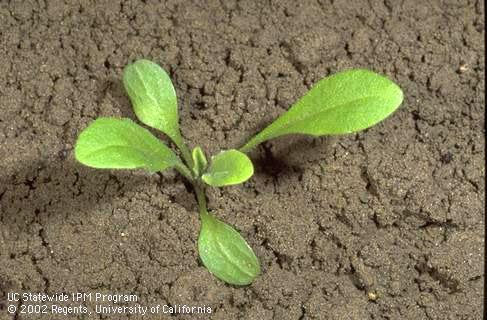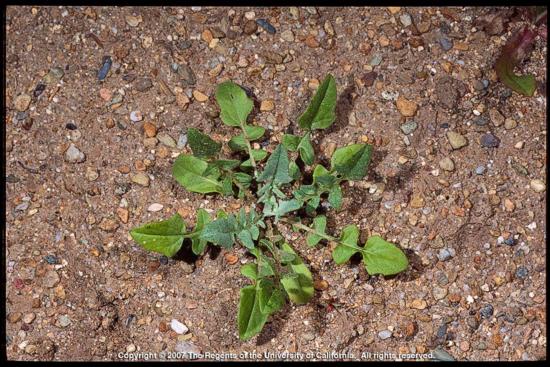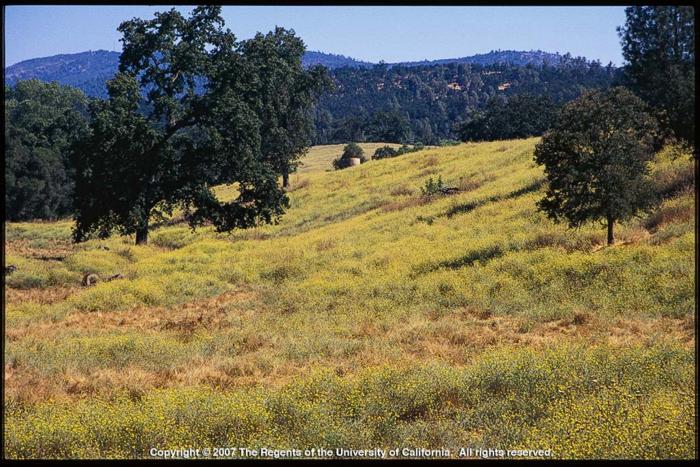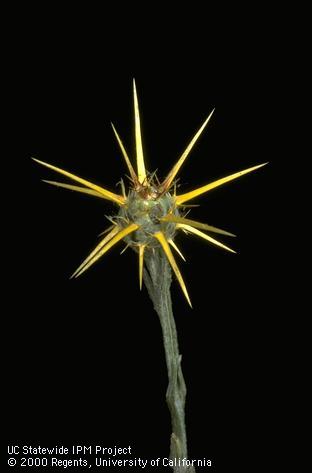Yellow Starthistle
Yellow Starthistle (Centaurea solstitialis L.). Yellow starthistle (YST) introduction into North America probably occurred in California after 1849 as a seed contaminant in Chilean-grown alfalfa seed. As agricultural processes evolved, YST began to spread across California with booms of spread from the 1920’s to 1940’s and again from 1960’s to present day. Currently there are over 15 million acres estimated to be affected by YST.
YST is very distinguishable as a long lived winter annual, with germination occurring fall through spring. It is grey-green to blue green in color with a long tap root, allowing it to take advantage of deeper water longer into the season. It can be from 6 inches to 5 feet tall, typically with spreading branches. As the plant matures, seed heads form with spines on the flower buds, and yellow flowers open. A yard square of YST can produce up to 30,000 seeds. YST is poisonous to horses only, a mechanical injury occurs from grazing the spiny seed heads. It is fairly high in protein, and cattle, sheep, and goats will graze on YST to an extent during different times of the year.
All management options will work to different degrees based on scale of infestation and time of year. YST will take more than one year to control, typically 3 to 5 years are needed to completely control YST. An integrated approach works well for controlling YST.
For more information and research papers please go here
If you are ready to enter the Yellow Starthistle Decision Support Matrix, please click here to walk through the process and determine management practices that work best for your YST patches.

YST seedling

Rosette Stage

Rangelands infested with YST

Spiny Stage
